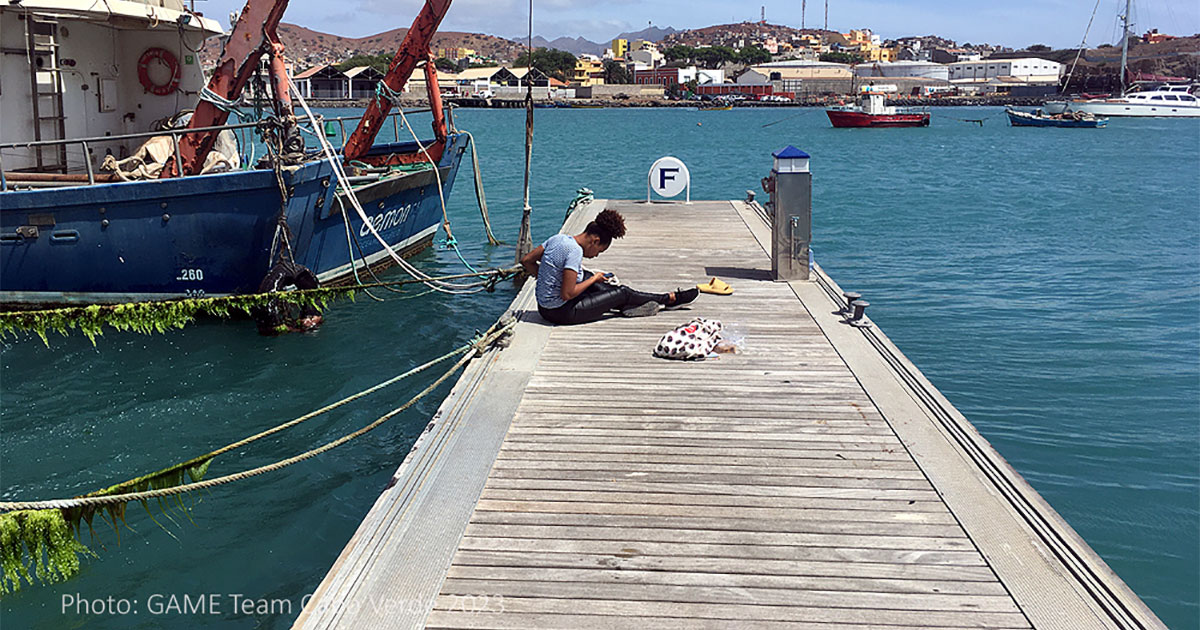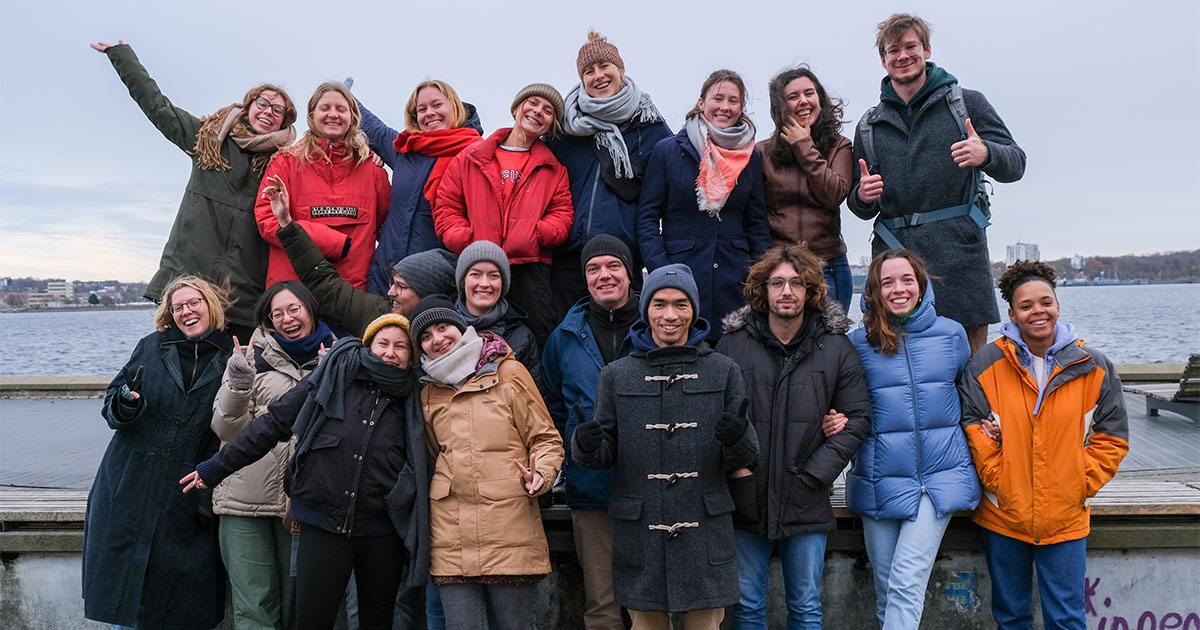Does artificial light at night change the composition of marine communities in shallow coastal waters and does it make a difference whether it is yellow or white light? The 19 international students involved in this year's GAME project investigated these questions in ten different locations around the world.
At the end of the program, they presented their findings at various universities in northern Germany. The unique international research and education program for marine science students has been offered at the GEOMAR Helmholtz Centre for Ocean Research Kiel for 21 years. Applications for 2024 are open until January 31.
19 students, ten countries and one common research question: that was the GAME 2023 project. “GAME” stands for “Global Approach by Modular Experiment” and is a unique international research and education program for students of marine sciences, which has been offered at the GEOMAR Helmholtz Centre for Ocean Research Kiel since 2002. German and international students work together in teams of two. One team member always comes from a German university, the other from one of the GAME partner institutes. Unfortunately, in 2023 one student had to work alone at the site in Malaysia due to a last-minute cancellation.
As usual, the 21st GAME year started in March in Kiel. All 19 participating students met here for a four-week course to work on the experimental setup for this year's common research question. In April they then travelled to Iceland, Israel, Finland, Malaysia, Japan, Croatia, Cape Verde, Chile, Spain and Portugal. The two-person teams spent six months working together in the field before collating and analyzing their results in Kiel from October. At the end of the program, the young scientists presented their findings at various universities in northern Germany.
From a scientific point of view, the program offers something very special: because the same experiment on an ecological topic is carried out simultaneously at different locations around the world, GAME provides globally comparable results. This year, as in the previous two years, the focus was on light pollution. The question was: “Does artificial light at night influence the diversity and composition of hard soil communities?” In other words, which species colonize substrates such as rocks, poles, sheet piling or even ship hulls when the water is illuminated by artificial light at night? And does it make a difference whether the lamp emits yellow or white light?
 The marina in the harbor of Mindelo was the research area of the Cabo Verde team. (Image credit: Amelie Muntschick)
The marina in the harbor of Mindelo was the research area of the Cabo Verde team. (Image credit: Amelie Muntschick)
“Artificial light has long been neglected as a form of pollution in the marine environment,” says project leader Dr. Mark Lenz, “but a change of attitude is slowly taking place.” The marine ecologist and his GAME students are leading the way—and this year's results are impressive. Dr. Lenz says: “We saw some strong effects, light seems to have a very big influence.” What is particularly interesting is that because the experiments were carried out in places with very different daylight conditions—from Iceland, where it almost never gets dark in summer, to Malaysia, which is so close to the equator that day and night are almost always the same length—the results are very different.
“We observed very strong growth under the influence of white light,” says Amelie Muntschick, who carried out the research with her tandem partner Isia Sousa from Mindelo on the Cape Verdean Island of São Vicente. “Species diversity declined sharply after the initial colonization, so that only a few species were able to establish themselves, but they produced a lot of biomass.” This could be an interesting result for boat owners struggling with fouling.
 Light pollution is one of his research interests: Dr. Mark Lenz, scientific coordinator of the international GAME project since 2004. (Image credit: GEOMAR)
Light pollution is one of his research interests: Dr. Mark Lenz, scientific coordinator of the international GAME project since 2004. (Image credit: GEOMAR)
The Kiel student is grateful for the experience of setting up her own research project from the very beginning without having to work alone: “We did all the work steps as a team. There are so many challenges along the way,” she says, looking at her team partner. Isaia Sousa nods: “It really is always surprising. Something would come up every day and then the solutions were the highlights.” The young Cape Verdean is still studying for her bachelor's degree, while most of the others will be writing their master's theses as part of GAME.
But for now, they are touring the university campuses of northern Germany to present their research and promote GAME—preparations for the 22nd GAME are already underway. This year's project will focus on how artificial light at night affects the growth, photosynthetic performance and defense capabilities of macroalgae. Applications are open until January 31.



